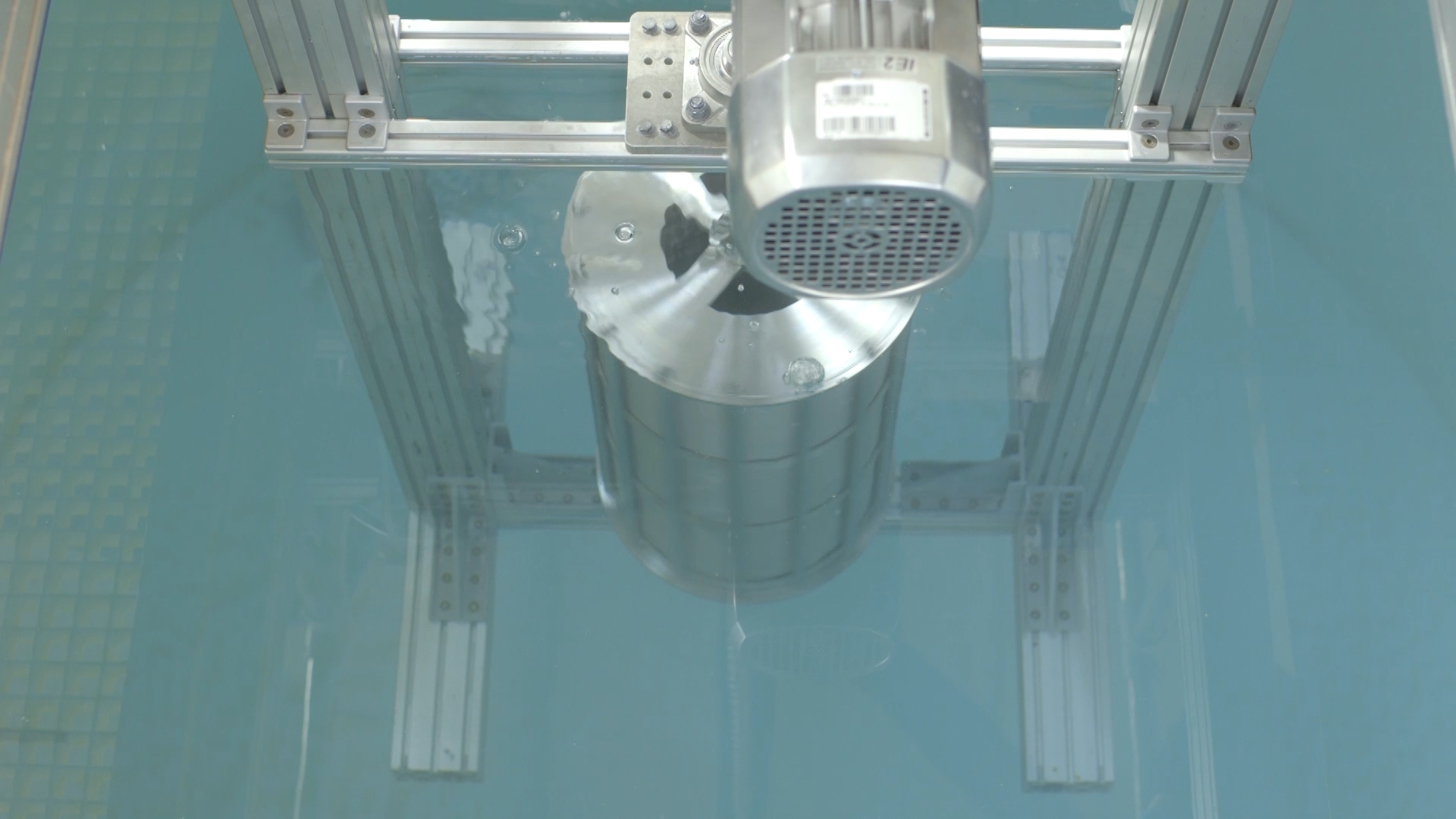Thinking outside the box, the nuclear sector puts a new spin on a pharmaceutical tool.

Large-scale testing is done on the Spinionic rotating bed reactor system.
We live in a world where we are continually driven to increase efficiency while decreasing costs—to do more with less. The nuclear industry is no different. Developing innovative techniques or adapting creative ideas found in other industries can support that pursuit to reduce cost and, in this case, volumes of waste, while providing program certainty. Such actions build confidence in our industry and allow nuclear power to continue to be part of the narrative of our clean-energy future.
ASME Best Oral Presentation/Paper Waste Management 2019
March 10, 2020, 9:02AMRadwaste SolutionsThao Do, Jiju Joseph, Giles Whitaker, Barb Noye, Vasile Bostan, Don Jarron, and J. Clara Wren As nuclear power plants age and retire from service, many countries face significant challenges concerning the safe long-term storage and disposal of large volumes of low- and intermediate-level radioactive wastes (L&ILW). In Canada, Ontario Power Generation (OPG) is currently in the process of obtaining regulatory approval for a deep geological repository (L&ILW DGR) for such wastes from decommissioning and refurbishment of its heavy water reactors. OPG is exploring innovative methods and technologies to improve safety and reduce the processing, transportation, and disposal costs of these wastes. The volumes of metallic waste are of particular concern, because when metal corrodes it produces hydrogen that could lead to pressure buildup in the L&ILW DGR.
ANS Best Oral Presentation/Paper Waste Management 2019
March 10, 2020, 8:42AMRadwaste SolutionsLaura Merlo-Sosa, Hugh Boniface, Richard Prokopowicz, and Sam Suppiah Heavy water is used both for moderating nuclear fission and transporting heat in CANDU reactors. As a result of heavy water use in these systems, tritium is produced in small quantities from thermal neutron activation of deuterium. The presence of tritium in the heavy water contributes to the radiation dose of the reactor staff and radioactive emission from the reactor facility. Tritium dose is usually controlled through design and operating procedures that minimize leaks and limit exposure to the tritiated water. Many of the CANDU operators have also reduced the operational tritium concentration through detritiation of the heavy water from the reactor. Detritiation is carried out in a centralized facility, such as the Tritium Removal Facility in Darlington, which provides this service to Ontario’s nuclear reactor fleet. Detritiation reduces both tritium emission and dose to workers and the public from reactor operation.
As demands for a comprehensive U.S. waste management plan increase, private vendors are certifying new SNF/HLW transportation cask designs.
A large-scale campaign to move spent nuclear fuel and high-level radioactive waste in the United States to a central repository or interim storage site does not appear to be coming anytime soon. External pressures, however, including a growing number of nuclear power plant closures and increased stakeholder demand to remove stranded spent fuel and HLW, are shifting focus to building the infrastructure needed to move large volumes of waste. This includes the design and manufacture of shielded transportation casks for shipping the waste by truck or rail.
An updated polymer gel from Argonne National Laboratory proves to be effective in removing radioactive contaminants from a legacy site.

The gel is applied to an area (left), where it is allowed to work for two to three hours before being removed. The final activity of the cleaned area (right) was counted using HPGe and Ludlum alpha/beta radiation detectors. Photos courtesy of ANL.
Current techniques for radiological decontamination often involve debasing or demolishing structures to contain contaminated dust and haul debris away. This is a costly method of decontaminating buildings and structures. If, however, effective nondestructive methods can be found, significant savings are possible. One such method, based on new research from engineers at the Department of Energy’s Argonne National Laboratory in Lemont, Ill., is now available.
The geologic repository for defense-related transuranic waste reached a milestone in 2019.
February 10, 2020, 7:38AMRadwaste SolutionsJef Lucchini, Robert Kehrman, and George Basabilvazo 
Participants to the 2017 Nuclear Criticality Safety Division topical meeting attended a tour of the WIPP facility, which marked its 20th anniversary this past year. Photos courtesy of WIPP
March 26, 2019, marked the 20th anniversary of the first shipment of transuranic (TRU) waste to the Waste -Isolation Pilot Plant (WIPP) facility in southeastern New Mexico. Celebrations of the 20-year mark of waste operations recognized the role of the WIPP facility in cleaning up legacy TRU waste from 22 generator sites nationwide.
The NWTRB offers findings and recommendations to the DOE on technical issues that need to be addressed in preparing for an integrated, nationwide program to transport nuclear waste.
The U.S. Nuclear Waste Technical Review Board (NWTRB or Board) recently completed an evaluation of Department of Energy activities related to transporting spent nuclear fuel (SNF) and high-level radioactive waste. These topics have been the subject of several Board meetings and associated reports, and in September 2019, the Board issued a report, Preparing for Nuclear Waste Transportation–Technical Issues That Need to Be Addressed in Preparing for a Nationwide Effort to Transport Spent Nuclear Fuel and High-Level Radioactive Waste [1], which focuses on the issues DOE will need to address to plan and implement an integrated transportation program. In its report, the Board describes 30 broad technical issues that DOE needs to address and offers three sets of findings and recommendations.






